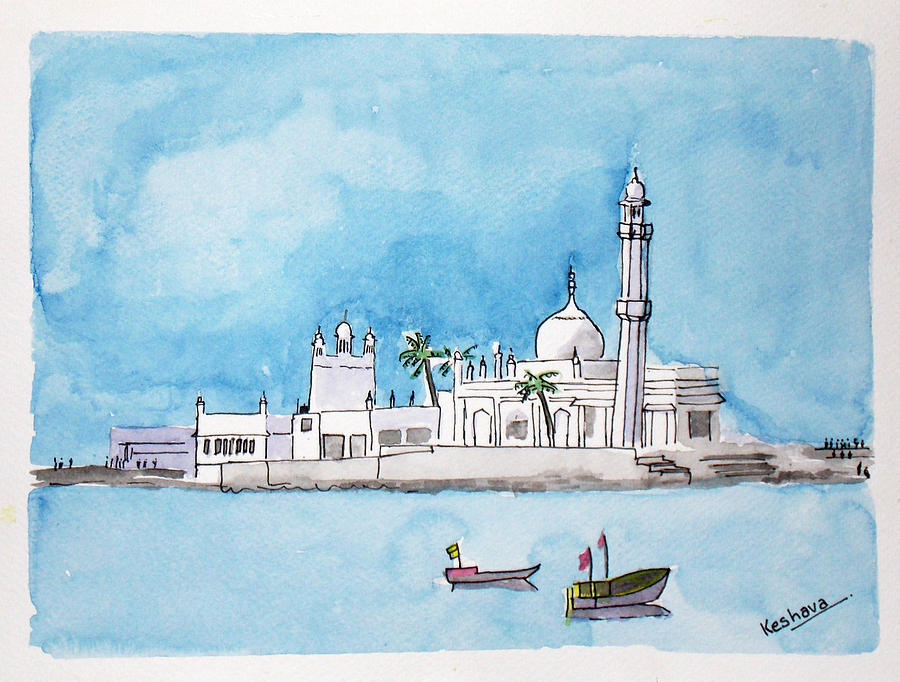- Visitor:120
- Published on: 2024-04-23 10:41 am
The Asvamedha Yagna: An Introduction
The distinctiveness of Vedic sacrifice comes from many reasons of which the following two are the main ones. Its ambiguities are much deeper than sacrifice elsewhere, and it operates at several levels, including the spiritual; and more uniquely. It posits an identity of the Sacrificer and the universe. This latter idea is perhaps why the “knowledge” central to the sacrifice becomes, in the end, the purpose of the sacrifice. This knowledge becomes the vehicle of the transformation of the participants. The “theatre” aspect of the ritual is, therefore, considerably accentuated.

This essay describes
several aspects of the Asvamedha rite, the “horse-sacrifice”,
and summarizes its logic. This rite is a great state function in which ritual
elements are woven together with secular ceremonies to make an assertion of
monarchical authority. It is called the
king of sacrifice in the Satapatha Brahmana (SB 13.2.2.1), whose Kanda 13
is devoted exclusively to the rite.
Before we proceed, we
emphasize that the use of the word “sacrifice”, with its common meaning of
“killing to offer to God or gods,” is cause of much misunderstanding of the
Vedic ritual. Vedic Yajna (sacrifice) need not involve any killing of animals.
It is a highly symbolic performance, and the animals of the sacrifice may be
clay images or grains, or they may just be specific utterances. The Chandogya
Upanisad, speaking of Revati Samans says, “The
hinkara is goats, the prastava sheep, the Udgitha cows, the Pratihara horses,
and the nidhana purusa” (CU 2.6.1; 2.18.1).
When an animal is
sacrificial in the ritual, we are speaking of mock killing in sacred theatre.
The word “killing” is described in the texts to apply equally to the pressing
of the soma stalks and the grinding of the grain (TS 6.6.9.2, SB 2.2.2.1-2,
4.3.4.1-2, 11.1.2.1). This is not to say that “animal” sacrifice has never been
taken literally in India, but we will show that the normative meaning of the
term is symbolic.
With this special
meaning of the word “sacrifice” in mind, we note that a large number of animals
are sacrificed in the Asvamedha rite. Chapters 22-25 of the Vajasaneyi Samhita
constitute the mantras to be read at the rite; the Taittiriya Samhita has
considerable material on it, scattered in several sections. This rite is not
emphasized by all early books. The Aitreya and Kausitaki Brahmanas have nothing
on it. The Rgveda 1.162 and 1.163 describe the sacrificial horse. The rite, as
described in RV 1.162, appears to involve only two animals, the goat (aja) and
the horse (Vaji, Asva). But note that SB 7.5.2.21 says Vak va ajah, aja
is speech.
Also, SB 9.2.3.40
says tad yad dadhidrapsa ‘upatisthate Tadeva pasurupam, the drop
of yogurt is a form of the animal; and SB 9.2.3.46 says asthini vai samidhh,
mamsani va ahutayah, the logs are the bones, and the oblations (of ghee)
are the flesh. So the flesh of the horse and the flies on it mentioned in RV
1.162.9 appear to be the ghee and the flies on it. TS 2.3.2.8 says dadhi
madhu ghrtamapo dhana bhavantyetadvai pasunam rupam, yoghurt, honey, ghee,
water, and grain are certainly the forms of (the five) animals. Dayananda
Sarasvati and his followers take RV 1.162 to be a hymn on the heroic
sacrificial horse who is being tended to by attendants.
The Vedic view
acknowledges that all creation is interdependent. It is asserted that ayam
atma brahma, the Atman contains the entire universe. Likewise, the body has
within it all creatures. Of the principal animals conceived within the body,
the horse represents time. The horse-sacrifice is then the most mystical and
powerful, because it touches upon the mystery of time, which carries within it
the secret of immortality.
The sacrifice of the animals is the enactment of the killing of the mortal lower self for a transformation into the immortality higher self. Since the higher self cannot manifest itself without the lower one, one must settle for something less, a ritual rebirth of the individual. In other words, sacrifice deals with mastery of time.
From here, the next
step is the cause of time, or the Sun. The Rgveda (1.163.2) says that the horse
is symbolic of the Sun. In VS 11.12 it is said of the horse, “In heaven is your highest birth, in air
your navel, on earth your home.”
Here the horse is
being symbolized by the sacrificial fire. SB 13.3.3.3 says that Asvamedha is
the Sun, while SB 11.2.5.4 says that it is to be done year after year. Asva
also means the horse, so it is the horse sacrifice for the courser in the
skies.
This is how the
Taittiriya Samhita describes the sacrificial horse of the Asvamedha:
The
head of the sacrificial horse is the dawn, the eye the Sun, the breath the
wind, the ear the Moon, the feet the quarters, the ribs the intermediate
quarters, the winking the day and night, the joints the half-months, the
joining the months, the limbs the seasons, the trunk the year, the hair the
rays (of the Sun), the form the Naksatras, the bones the stars, the flesh the
mist, the hair the plants, the tail hairs the tress, the mouth Agni, the open
(mouth) Vaisvanara, the belly the sea, the anus the atmosphere, the testicles
the sky and the earth, the membrum virile the pressing-stone, the seed
the soma. (TS 7.5.25)
In other words, the
whole universe is the sacrificial horse. An actual horse represented the
“sacrificial” horse in part of the ritual; elsewhere the representation was by
other objects.
It may be that asva
was a primary name for the Sun that was later applied to the horse. The
celestial horse was supposed to spring from the sea (cosmic waters enveloping
the earth) and return to it. The Puranas use the image of a fire-breathing mare
that lives in the sea. As an Equine-head, it is called Vadavamukha and the fire
coming out of its mouth is called Vadavanala. It is a visualization of what
happens to the Sun as it sinks in the primal waters.
This rite has been
commented on by several scholars. But this examination has been mainly
regarding the details of the rite in the Satapatha and its descriptions in
later Sanskrit literature, such as the Mahabharata and the Ramayana. The Indian
medieval commentators such as Uvata, Mahidhara, and Bhatta Bhaskara take the ritual
literally. But their views do not completely square with the earliest accounts
in the Satapatha and the Rgveda. It appears that the medieval ritualists were
projecting their contemporary attitudes in their embellishments of the
narrative.
The Mahabharata account of the rite is quite fragmentary. Although the 14th Parvan of the epic is devoted to the performance of the Asvamedha Yajna by Yudhisthira, very little is written on the rite itself. It is stated that the rite will take place on the full Moon of the month of Chaitra. A mention of twenty-one stakes is made, as of the piling of a falcon Agnicayana altar. Likewise, the Ramayana also glosses over the ritual in just a few verses.
Horse
and Cattle
For some time, the
analysis of the Asvamedha rite got entangled with the 19th century
race-based theories about conquest of India by cattle-driving outsiders whose
use of the horse gave them military superiority. It was believed that the
importance of the horse in the ritual arose out of this military use. But
recent archaeological findings have shown no evidence of any racial conflict or
mass-migrations.
Horses have roamed
the earth for millions of years. The genus Equus appeared in early Pliocene of
Northern America; around 2.5 million years ago it dispersed to Asia (E.
Sanmeniensis, E. Sivalensis, E. Namadicus), Europe (E. Stenonis, E.
livenzovensis) and then Africa (E. Koobiforensis). A later movement
brought E. hemionus and E. Caballus to Eurasia. Equus also
dispersed in the middle and late Pleistocene into Southern America. With the
exception of Australia and Antarctica, it had a worldwide distribution and
survived undisturbed until about 10,000 years ago, when overhunting by prehistoric
man brought it to a drastic reduction in Eurasia, and to extinction in the
Americas, where it was reintroduced in post-Columbia times.
In the Old World,
horses are depicted in cave paintings in France that are up to 20,000 years
old. Analysis of horse teeth suggests that riding began about 6,000 years ago.
While the Indian Horse E. Sivalensis is supposed to have become extinct
about 50,000 years ago, other sub-species emerged that have the general
features of the horse described in the Vedic books. The Vedic horse has 34
ribs, against the 36 ribs of the Central Asian horse.
Genetic studies of Indian cattle have shown that it is a distinct sub-species that separated from the Middle Eastern and the European cattle, tens of thousands of years ago. Cattle remains have been found that go back to the earliest level of the Indic tradition in Mehrgarh that has been dated to 6500 BC. The new evidence on the distinctiveness of the Indian horse and the cattle establishes that the military function could have played no role in the choice of the horse in the ritual.

Paradox,
Transcendence
There have been
several modern scholarly studies of the concept of sacrifice. According to one
view, sacrifice is just an invention of scholars. This is, of course, not true.
According to another, sacrifice provides a means to the community to redirect feelings
of violence and aggression, saving it from collapse. Sacrifice is then a social
construct of great use, and it has elements of competition and gift-giving
woven into it.
The victim is both
outcast and savior, and being separate from others, the king is often the ideal
(but not real) victim. This may explain elements of sacrifice in many
societies, but sacrifice is not a unitary experience. There are many varieties
of it which will fall outside any theory, and the Vedic sacrifice is one of
them.
The distinctiveness
of Vedic sacrifice comes from many reasons of which the following two are the
main ones:
(i)
Its
ambiguities are much deeper than sacrifice elsewhere, and it operates at
several levels, including the spiritual; and more uniquely,
(ii)
It
posits an identity of the Sacrificer and the universe. This latter idea is
perhaps why the “knowledge” central to the sacrifice becomes, in the end, the
purpose of the sacrifice. This knowledge becomes the vehicle of the
transformation of the participants. The “theatre” aspect of the ritual is,
therefore, considerably accentuated.
Given this
background, it is not surprising to see Heesterman, a scholar of Vedic
sacrifice, summarize: “Sacrifice can
perhaps be best seen as a ‘play’ that makes the tensions and uncertainties
visible by breaking them down into separate well-defined acts and throwing
their ambiguity into relief. In this way it turns tension into conflict,
ambivalence into paradox, uncertainly into impending disaster, and disaster
into triumph.”
Heesterman is
essentially paraphrasing what the Vedic ritualists themselves say about
sacrifice. But, he is less perceptive when he sees the Vedic sacrifice emerge
out of a mythology of fire.” Since man’s appropriation of the fire, its care
and exploitation had been an inexhaustible source of creative imagination and
ratiocinative reflection. Made and cultivated by man the fire – his fire
– was directly related to him in an ambivalent and tensely personal way… While in ancient Iran the fire, enthroned in its temple, was
made to transcend self and community, the Vedic ritualists went the opposite
way.
They maximized the
personal bond of man and his fire. The fire and its cult where drawn into man’s
individual self, the atman. Not the ambivalent and unpredictable fire
but the atman was to encompass and control life and death. As such it
could not but be the seat of immortality. In other words, the individual self,
the atman, was made to transcend both fire and community.”
The idea of the
abstract sacrifice is already the center stage of the Rgvedic hymns, so to see
a development from the physical to the spiritual beyond the Rgveda is wrong.
But there is more than just the idea of sacrifice in this text. Antonio de
Nicolas is correct when he says that to see the Rgveda as a book of rituals, a
religio-cultural mythology, or an esoteric spiritual document is merely to
scratch its surface structure.
He argues that one
must take it as a linguistic whole, with four languages of:
1. Non-existent (asat)
2. Existence (Sat)
3. Images and Sacrifice (Yajna)
4. Embodied (Rta) vision (Dhih)
He adds, “These four
languages function as four spaces of discourse, four ways of viewing the world
within which human action takes place and form which any statement in the text
gains meaning. The languages of Non-existence, Existence, Images and Sacrifice
show the human situation within certain disparate linguistic contexts embodying
different ways of viewing the world… A complementarity of language is
suggested under a transcendent and unifying language: and each language is torn
from its opposing demands of exclusivity in exchange for a way of viewing and
acting in the world which is eternally (Nitya) efficient.”
The different
languages of the Rgveda address the four different aspects of our reality: (i)
Physical existence, (ii) Mind, consciousness, spirit, (iii) Transformation, and
(iv) Embodied vision. The languages of asat and sat also relate to the present
and its creative renewal. These four aspects are interdependent, so the
languages required to describe them are context sensitive.
Like the Rgveda,
Vedic sacrifice operates through several languages. Behind the drama of the
actual performance are several narratives regarding non-existence, existence,
change, and embodied vision. The performance picks up elements of these
narratives as it goes along, rendering the performance esoteric and
paradoxical.
This essay describes
the Asvamedha rite and its symbolism. This is used to explain distinctive
aspects of the Vedic sacrifice system. Several questions related to the
Asvamedha are posed and answered in the context of Vedic epistemology.
The Asvamedha rite has several functions; (i) It presents an equivalence of the naksatras year to the heaven, implying that it is a rite that celebrates the rebirth of the Sun; (ii) It is symbolic of the conquest of Time by the king, in whose name the rite is performed; (iii) It is a celebration of social harmony achieved by the transcendence of the fundamental conflicts between various sources of power. Numbers from another Vedic rite, the Agnicayana, help in the understanding of several of its details.
Bibliography:
Kak, S., 2002, Introduction, The Aśvamedha: the rite and its logic. Motilal Banarsidass Publishe., pp.1-8.
Center for Indic Studies is now on Telegram. For regular updates on Indic Varta, Indic Talks and Indic Courses at CIS, please subscribe to our telegram channel !
- 60 min read
- 1
- 0










